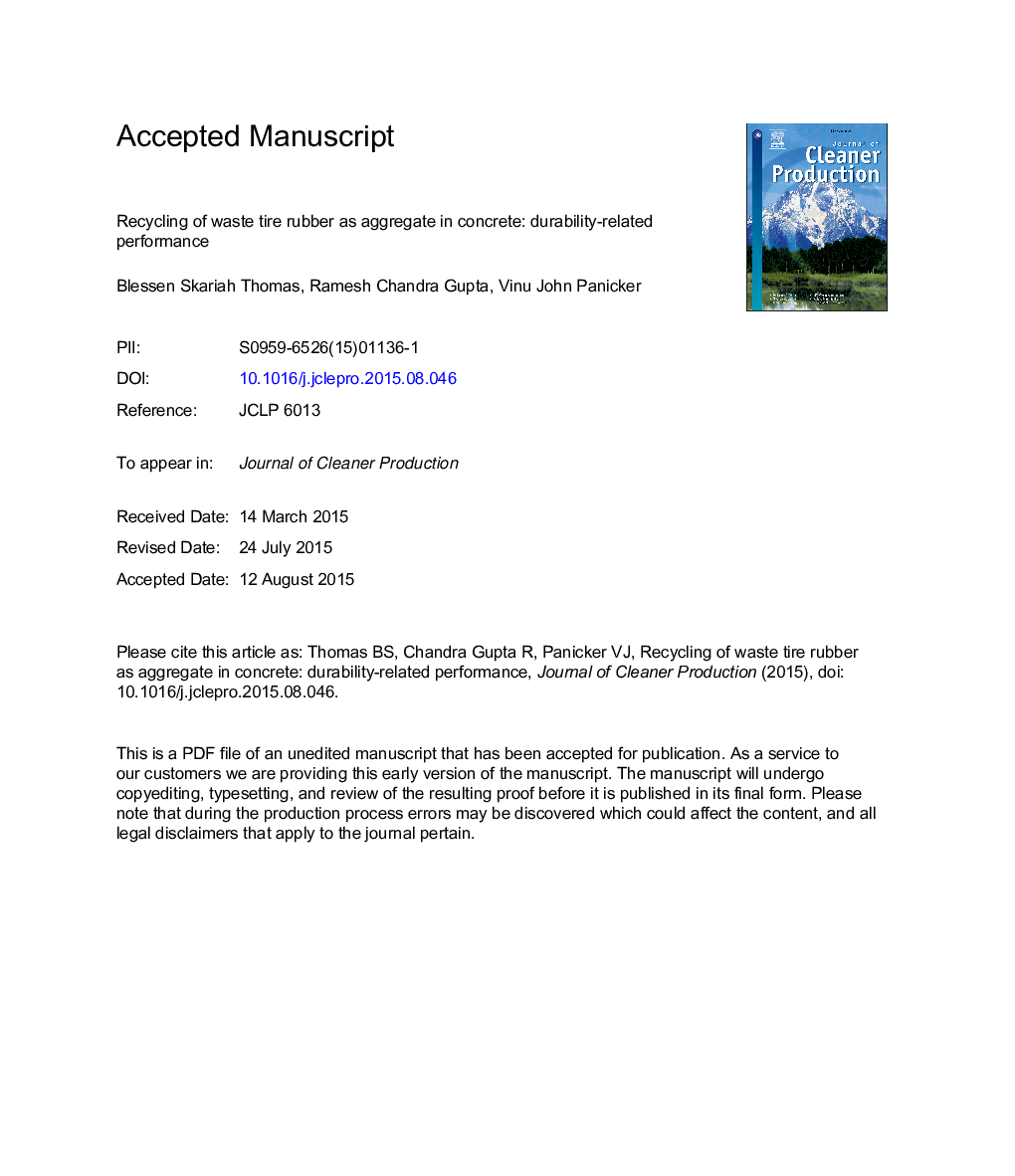| Article ID | Journal | Published Year | Pages | File Type |
|---|---|---|---|---|
| 10688058 | Journal of Cleaner Production | 2016 | 29 Pages |
Abstract
This paper presents the results of an experimental investigation to comparatively study the depth of chloride penetration, resistance to acid attack and macrocell corrosion of rubberized concrete and control mix concrete. Waste tire rubber in the form of crumb rubber was replaced for natural fine aggregates from 0% to 20% in multiples of 2.5%. Analytical studies were performed with Abaqus and the results were compared with compressive and flexural strength obtained in the laboratory. It was observed that the depth of chloride penetration of the concrete with 2.5-7.5% crumb rubber was lower than or equal to the control mix concrete. In the water absorption test of acid attacked specimens, gradual increase was observed as the percentage of crumb rubber was increased. After acid attack, more losses in the weight and compressive strength were observed in the control mix concrete than the rubberized concrete. There was no presence of sufficient corrosion in the specimens from the macrocell corrosion test. The analytical results have shown the same trend for compressive strength and flexural tensile strength as obtained in the laboratory. It can be concluded that the rubberized concrete is highly resistant to the aggressive environments and can be implemented in the areas where there are chances of acid attack.
Related Topics
Physical Sciences and Engineering
Energy
Renewable Energy, Sustainability and the Environment
Authors
Blessen Skariah Thomas, Ramesh Chandra Gupta, Vinu John Panicker,
